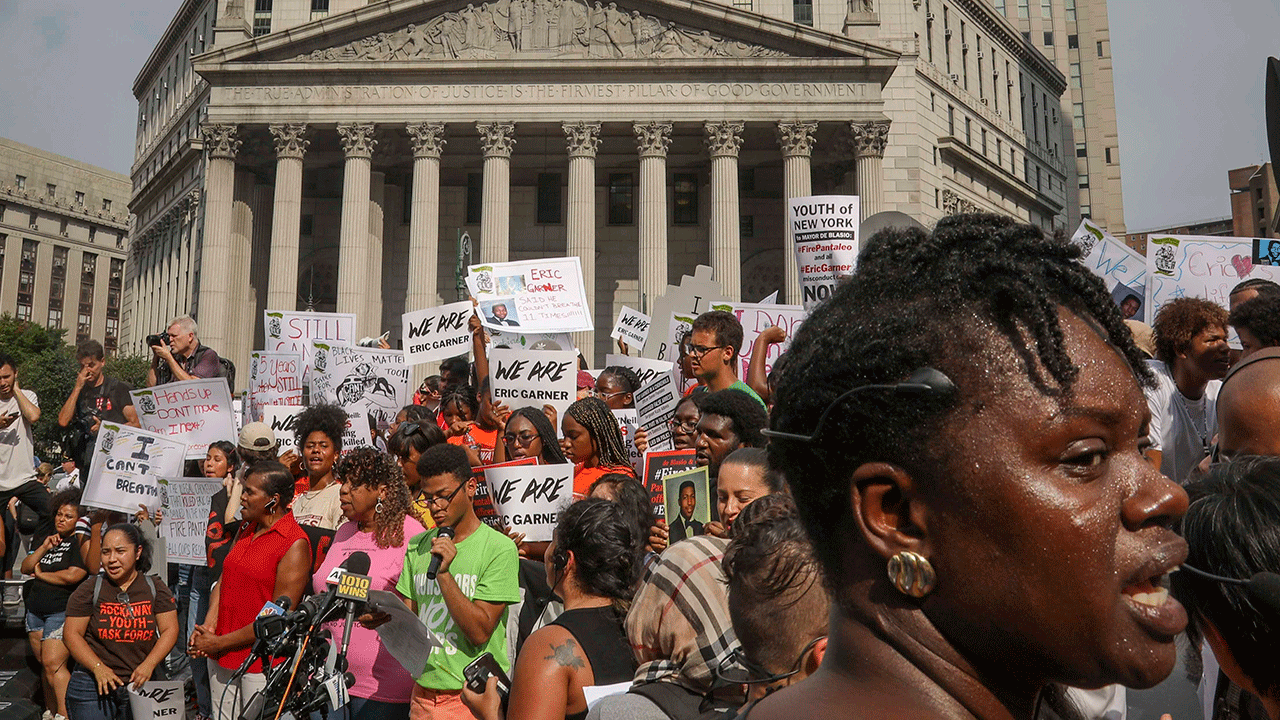Fox News Flash top headlines for November 20
Fox News Flash top headlines are here. Check out what's clicking on Foxnews.com.
New York's highest court on Monday upheld a New York City law that forbids police from using chokeholds or compressing a person's diaphragm during an arrest, rejecting a challenge from police unions to a law passed after the death of George Floyd.
The New York Court of Appeals, in a unanimous decision, ruled that the law is clear in its language and that it does not conflict with an existing state law that bans police from using chokes.
The city's law came as governments across the country prohibited or severely limited the use of chokeholds or similar restraints by police following Floyd's death in 2020, which occurred as a Minneapolis police officer kneeled on his neck for several minutes.
NEW YORK CITY TO REDUCE POLICE NUMBERS, SLASH BUDGETS DUE TO BILLIONS SPENT ON MIGRANT CRISIS

A rally of mostly young people protest in Federal Plaza against the decision by federal prosecutors not to bring civil rights charges against New York City police officer Daniel Pantaleo for the 2014 chokehold death of Eric Garner, July 17, 2019, in New York. (AP Photo/Bebeto Matthews, File)
NYC TO CUT OVERTIME PAY FOR POLICE DESPITE BEING UNDERSTAFFED BY 'THOUSANDS'
The Police Benevolent Association of the City of New York, along with other law enforcement unions, sued the city over its law and have argued that its language is vague as to what officers are allowed to do during an arrest. In a statement, John Nuthall, a spokesman for the Police Benevolent Association of the City of New York, said the ruling will provide clarity to officers.
"While this is not the outcome we had hoped for, the Court’s decision is a victory insofar that it will provide our officers with greater certainty when it comes to the statute, because under this Court’s decision, it must be proven at a minimum that an officer’s action in fact ‘impedes the person’s ability to breathe,’ was ‘not accidental,’ and was not a ‘justifiable use of physical force,’" Nuthall said.
The New York Police Department has long barred its officers from using chokeholds to subdue people. New York state also has a law banning police chokeholds that was named after Eric Garner, who was killed when a New York Police Department officer placed him in a chokehold in 2014.
The city's law, while banning chokes, also includes a provision that forbids officers from compressing a person's diaphragm. Such a compression, though kneeling, sitting or standing on a person's chest or back, can make it difficult to breathe.






















